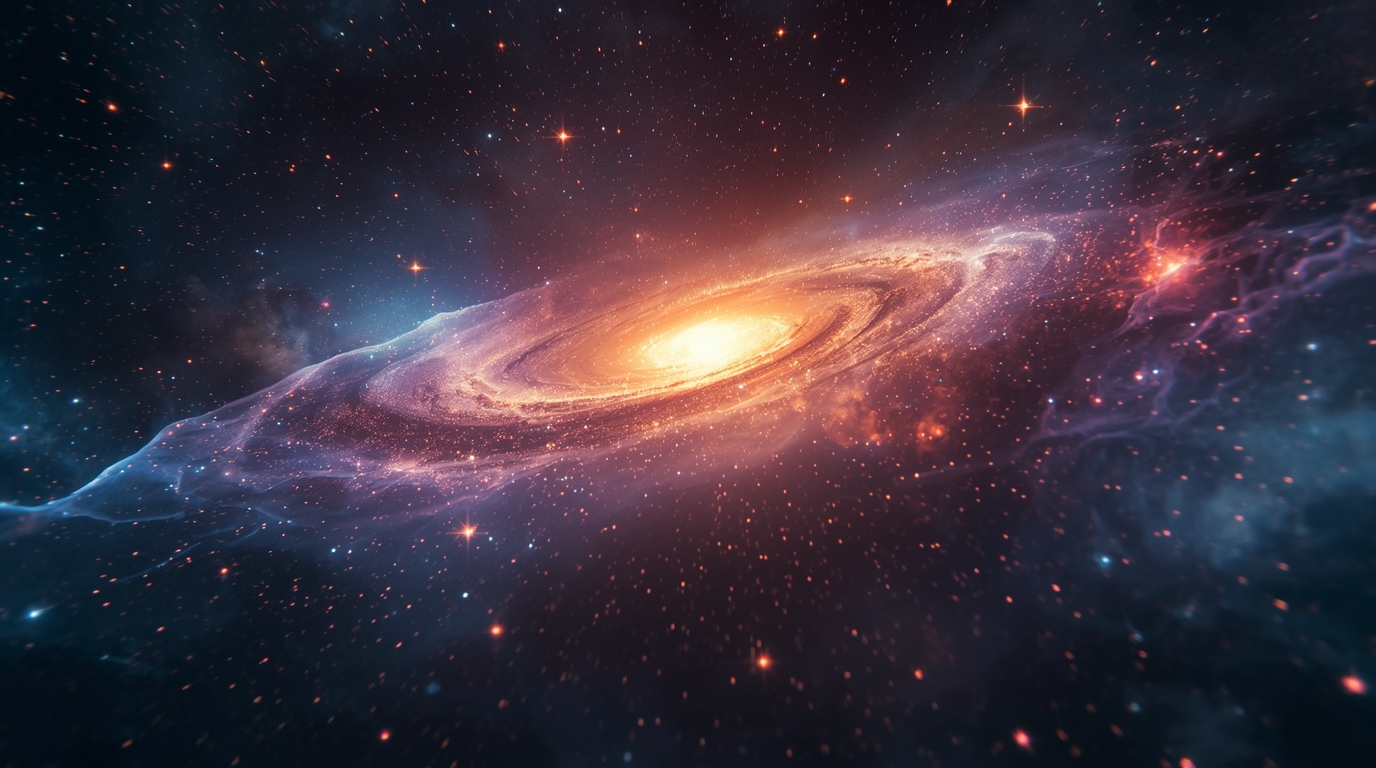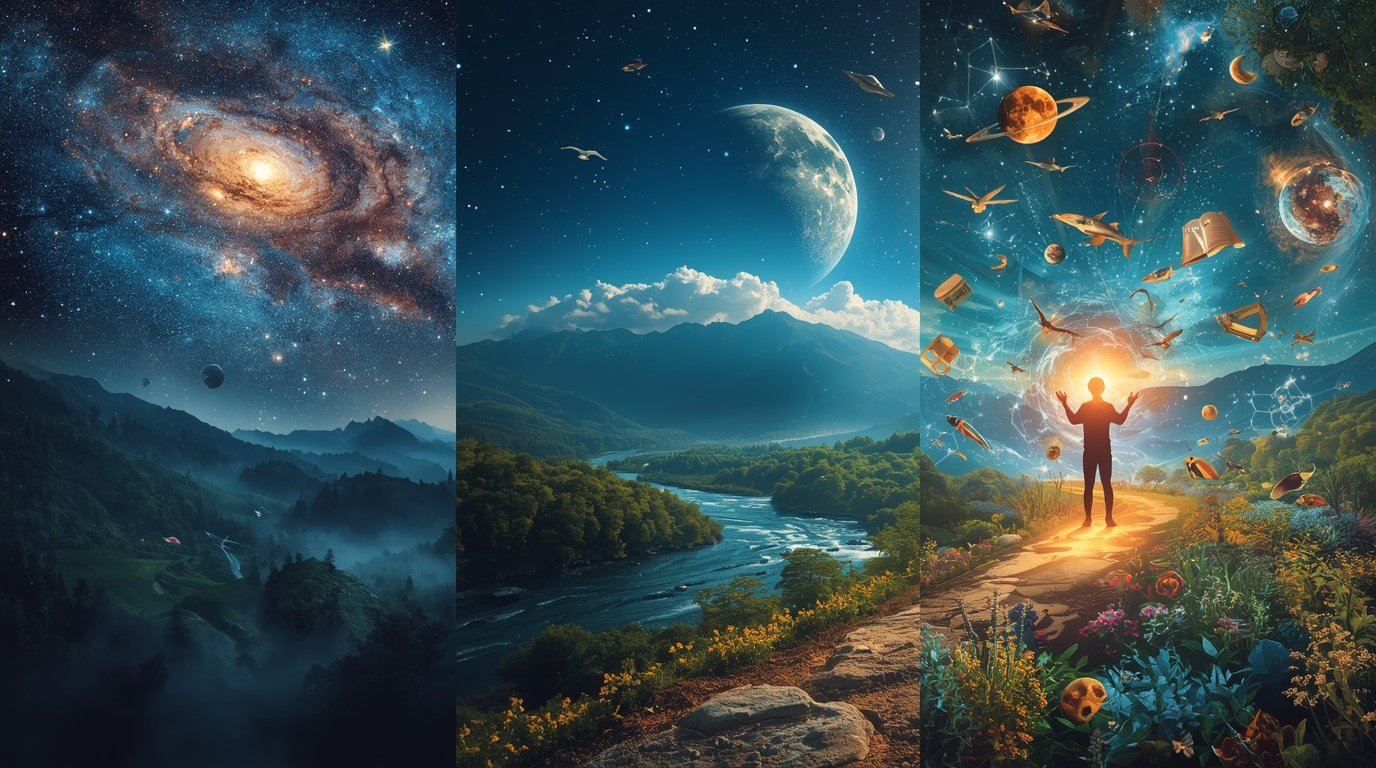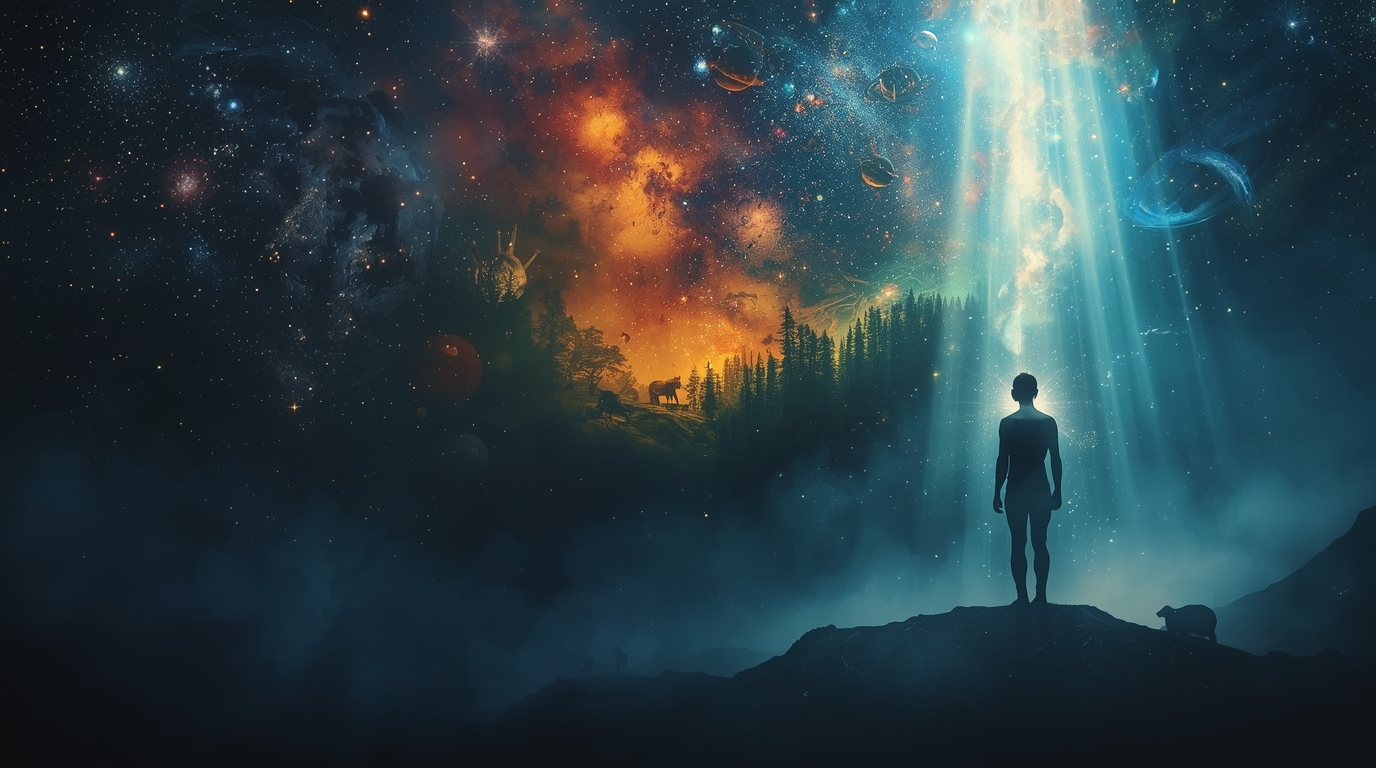Understanding Free Will, Accountability, and Karma.
Understanding Free Will, Accountability And Karma. Free will, the capacity to make choices independently of any preordained force or fate, is a central concept in…

Life is not random. It is not a loose collection of coincidences. It is a carefully designed system, built with certain rules, and carrying a purpose, even if that purpose is not always visible in our day-to-day life.
This is where our journey begins.
From the moment when God made his first decision to create life, and to set it in motion under certain universal laws and keep it growing through evolution.
From the beginning, the force we call Nature, or the unseen Will behind all existence, was not just a passive field of energy. It was a living source of power. And as the ancient thinkers often said, power never wishes to remain idle. Like a river that must flow, or a fire that must burn, power seeks expression. It seeks to act.
So, Nature decided to create a world, a world that would exist under its command, yet be filled with its own rhythms and cycles. But this world was not made immortal. Like all things created with wisdom, it was given a beginning and an end, a defined time period. Nothing eternal was placed inside this mortal world, because eternity can only be carried by that which is beyond the material.
So, the universe was created with a purpose and a timeline. And to keep this universe alive, breathing, and meaningful during its given lifespan, Nature made a bold decision, it would introduce life into this present, developed stage. Instead of creating a fully developed form of life, it created life intentionally imperfect, with flaws, with cracks, with room to grow. Because in that room to grow, lay the greatest secret of all: evolution.
Nature knew that a life built perfect from the start would suffocate under its own completeness. But a life that carried imperfection in its core would always have a reason to move forward, to reach higher, to become better.
You Sould Also Read This Life Changing Article;

Nature created three types of life.
1. Subjective Life — The Silent Structure of the Universe.
At the foundation of life, nature designed a vast category called Subjective Life. This form of life is not “alive” in the traditional sense of breathing or thinking, but it forms the solid skeleton of the universe, like galaxies, stars, solar systems, planets, moons, asteroids, and every other cosmic structure visible to us.
What makes subjective life unique is its predetermined nature. From the moment of its creation, its structure, form, and function were fully defined. These entities do not evolve through choice or learning; they simply perform their designated roles with absolute consistency. A star burns, a planet revolves, a galaxy spirals — all in perfect obedience to the fundamental laws of universe.
Nature’s favorite expression within subjective life is circular motion. Everything moves in cycles: planets orbit stars, moons orbit planets, galaxies rotate around their centers. This repetitive, harmonious motion reflects a deep cosmic order. Subjective life does not question, resist, or change; it simply exists and functions as designed, providing the stage upon which the drama of life unfolds.
2. Objective Life — The Network of Ecosystem-bound Beings.
The second form of life created by nature is known as Objective Life. Unlike the static existence of stars and planets, objective life is organic, and dynamic. This category includes all forms of life except human beings, like animals, birds, fish, insects, plants, rocks and even microorganisms.
What defines objective life is its placement within a shared ecosystem. These beings are designed to live, adapt, and survive within the environmental conditions provided to them. They cannot change or choose their surroundings; their role is to exist in harmony with the immediate ecosystem they are born into. A fish cannot choose to live on land. A tree cannot uproot itself and walk away from deforestation. Their limitations are built-in, ensuring that the balance of the natural world is maintained.
Despite their lack of choice, objective life serves a greater collective purpose. Every species, whether predator or prey, contributes to the delicate web of life. Pollinators enable plant reproduction. Predators keep populations in check. Decomposers recycle nutrients. Each life form has a functional role, keeping the cycle of life continuous and self-sustaining. Their lack of individual will, is not a flaw but a design feature, it prevents chaos and ensures ecosystem stability.
3. Intelligent Life — The Gift and Burden of Choice
The third and rarest creation of nature is Intelligent Life. This is where human beings enter the picture. Unlike subjective structures or objective creatures, intelligent life was given a unique attribute: the power of choice. With intelligence comes the ability to think, reflect, understand, and most importantly, to alter their surroundings and reshape their own journey.
Human beings are not bound to a single ecosystem in the same way as other life forms. They possess the capacity to modify their surroundings, create tools, build shelters, cultivate food, and even explore beyond their native environments. This adaptability has allowed humans to thrive in deserts, mountains, polar regions, and even in the artificial environments of space.
But this power is a double-edged sword. With the freedom to choose comes the responsibility of understanding the consequences of those choices. Unlike animals who act purely on instinct, humans can choose to create or destroy, to nurture or exploit. This unique position requires a deeper sense of awareness and morality.
Intelligent life represents nature’s greatest experiment — giving a species the tools to become a conscious participant in evolution, rather than a passive product of it. Humans are capable of transcending basic survival instincts, aiming for higher purposes like knowledge, art, philosophy, and spiritual growth. Yet, they also bear the burden of potentially disrupting the ecosystems they rely on.
Nature’s creation of these three forms of life is not a random arrangement but a hierarchical harmony. Subjective life provides the stage, the physical reality. Objective life maintains the ecosystem, the continuous flow of organic existence. Intelligent life holds the potential to either elevate or disturb this balance through its choices.

When it was time to decide which life would carry the torch of imperfection and grow through evolution, Nature chose intelligent life—human beings. There was deep reason in this choice. Evolution, which was Nature’s finest tool for progress, demanded two key factors.
First, mobility—the ability to move, to change, to never settle into comfort for too long.
And second, modification—the capacity to learn, to adapt, to rise from each mistake, each flaw, and shape self into something better and greater.
Among all forms of life that Nature had created, only human beings were found to hold the special combination needed to carry forward this grand experiment of evolution. Other creatures lived within the boundaries of their instincts, repeating the same patterns generation after generation. There was no bridge between where they were and what they could become.
But humans were different. They carried within them two gifts that no other lifeform possessed, competence and creativity. These were not ordinary traits. They were the keys that unlocked both the requirements Nature had set for evolution.
Competence gave humans the ability to act, to solve problems, to face the daily challenges of survival, and to keep life moving forward. It was competence that ensured humans did not remain stuck in one place, physically or mentally. They hunted, gathered, built, farmed, explored. They learned the laws of the earth, the ways of the seasons, the patterns of the stars. Through competence, humans became mobile, not just across lands, but also across stages of development. They kept pushing their limits because they had the power to work, to endure, to act. But competence alone was not enough.
The second gift, creativity, was what made humans capable of modification—of seeing what was and imagining what could be. It was creativity that allowed the first humans to pick up a stone and see a tool, to watch a spark and see fire, to look at the stars and wonder about the meaning behind them. Creativity turned survival into art, struggle into progress, hardship into invention. It was through creativity that humans walked the long, winding road from caves and stone tools to cities of steel, to soaring technologies, to visions of futures which were yet unwritten.
Because humans carried both competence and creativity—because they could act and also imagine—they were chosen as the vessels for Nature’s grand plan of imperfect life moving toward perfection. This is the secret behind the human design.
Nature, too, seemed to understand this truth. Only a lifeform that could both keep moving and keep improving would carry evolution to its highest point. Thus, we humans were selected—not because we were the strongest, or the fastest, or the most obedient—but because we had within us the restless energy to move and the creative spark to change.
This is the foundation of the human journey. It is not a race toward perfection, but a slow climb, a deliberate walk from lower states of being toward something more refined, more awakened. As Nietzsche reminded us, “One must still have chaos in oneself to give birth to a dancing star.”
This is how life was designed imperfect, so it could have a reason to grow. And in that growth, lies the real meaning of our existence. And perhaps, the deepest responsibility we carry.
You Should Also Read My Book;
Understanding Free Will, Accountability And Karma. Free will, the capacity to make choices independently of any preordained force or fate, is a central concept in…
The Trap Of Comfort, You May Be Its Victim. Are you in a trap of comfort? In the heart of every individual, there lies a…
The Real Wealth of Life: Time and Energy. Every day we are given only a certain amount of time and a certain amount of energy…